|
|
| Formation of alkyl hydrogen sulfate uses concentrated sulfuric acid. Acid -catalyzed hydration uses a more dilute sulfuric acid solution. | 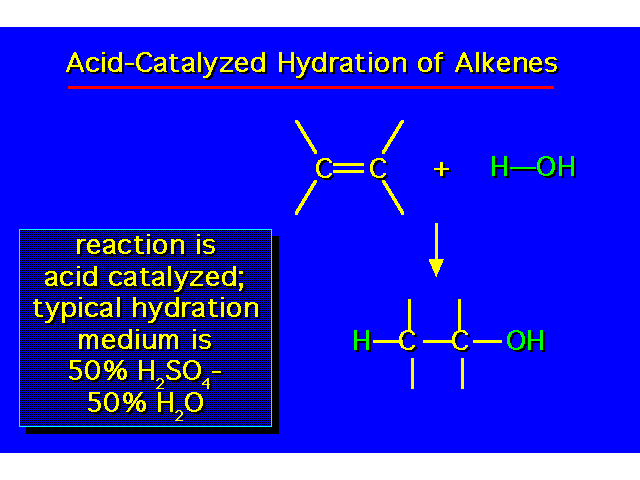 |
| | 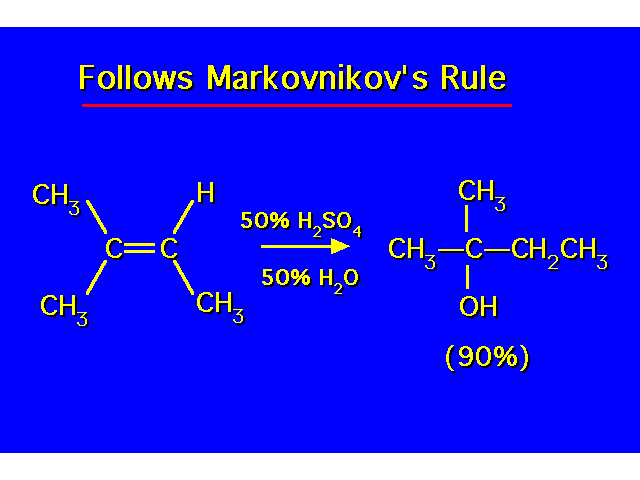 |
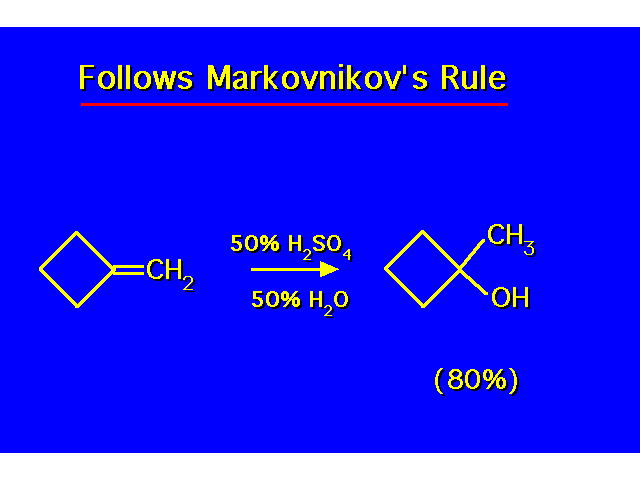 | |
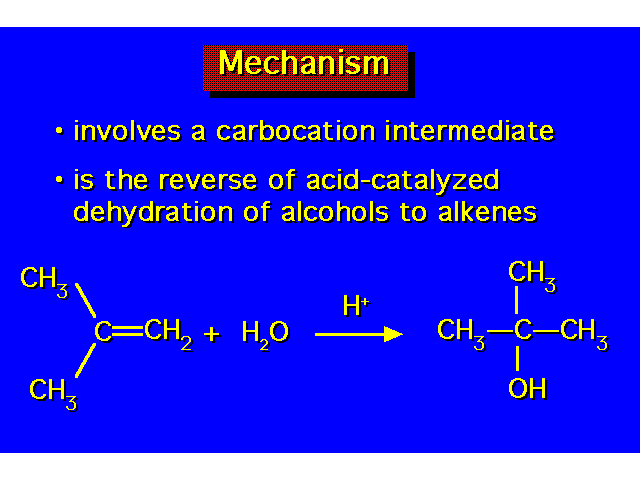 | |
| The carbocation seeks a pair of electrons. In this reaction mixture there is a lot of water which acts as a nucleophile. The carbocation can rearrange if a more stable carbocation can be formed before reacting with the nucleophile. |  |
| The hydronium ion catalyst is regenerated. | 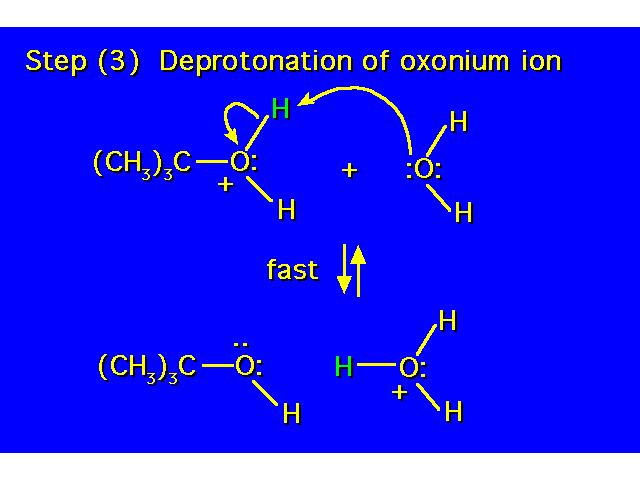 |
| The rate of reaction increase follows the order of carbocation stability |  |
| The amount of water present in the reaction mixture determines the position of equilibrium. In the dehydration reaction, concentrated H2SO4is used .... there is little water so equilibrium lies to the left. In the hydration reaction, an aqueous H2SO4 solution is used .... there is lots of water so equilibrium lies to the right. |  |
 | |
Formation of the 1-decanol would entail anti-Markovnikov addition of water to the alkene. Antil-Markovnikov alcohols cannot be made by acid-catalyzed hydration. |  |
| BH3 is the electrophile in this reaction. |  |
 | |
 | |
 | |
 | |
 | |
 | |
 | |
 | |
| The solvent for this reaction is typically either CHCl3 or CCl4. This reaction can be observed visually and provides a test for the presence of C=C. Bromine is orange-red in color. The vicinal halide is colorless. As the bromine is added to the C=C, the color of the bromine disappears. The bromine is decolorized. |  |
 | |
 | |
 | |
 | |
 | |
 | |
 | |
 | |
| The second step involves attack of a nucleophile. There are two nucleophiles present -- Br- and water. Since the water is present in a much larger amount, it interacts with the bromonium ion. In this case the solvent (H2) can act as a nucleophile. CCl4 is not nucleophilic and does not interact with the bromonium ion when it is the solvent. |  |
 | |
 | |
 | |
 | |
 | |
 | |
 | |
 | |
 | |
 | |
 | |
 | |
| The structure of an unknown alkene can be determined from the products of the ozonolysis reaction. The carbons that are carbonyls in the products were part of a C=C in the original compound. |  |
